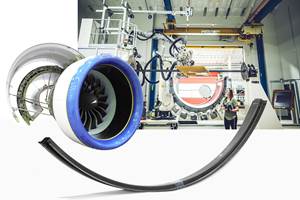There are no bad ideas
Whenever we, as an editorial staff, sit down to begin planning editorial features and other articles for the coming year, we get our ideas from a variety of sources.
Whenever we, as an editorial staff, sit down to begin planning editorial features and other articles for the coming year, we get our ideas from a variety of sources. Some are pitched to us by processors or suppliers and some are conjured up by members of the editorial staff. Many ideas, even in the planning stage, are fairly well-formed and focused. Some are clearly structured around a specific case history — these often become our “Inside Manufacturing” articles. Others center around part design and material selection, thus making them good candidates for our “Focus on Design.” Throughout the year, we also do what we call technology “roundups.” These might focus on a material type (fiber or resin), a manufacturing process, curing methods or any of a large number of types of manufacturing equipment. Technology stories are often selected and assigned because they represent a segment that HPC has not covered for some time and has shown some signs of evolving. For example, a few years ago, we did several articles on fiber forms, during the time when nonwoven reinforcements were beginning to supplant woven fabrics in a number of applications because they offer a method of construction that does not crimp the fiber.
Such stories can easily take on a life of their own, evolving quickly from a technology update to a multipart, multidimensional, full-grown exploration of the many ins and outs of the technology, process or material. This month’s issue gave birth to one such behemoth, which reviews current offerings in the automated fiber placement (AFP) and automated tape placement (ATL) world.
This story seemed like a simple one when we scheduled it. The increasing and heavy use of ATL and AFP in the manufacture of major structures for commercial aircraft like the Boeing 787 Dreamliner and the Airbus A350 XWB — particularly the fuselages — almost demanded an assessment of this dynamic segment of the machinery market, where fast-changing hardware and software capabilities are making once difficult and prohibitively expensive composite structures feasible and practical.
However, when I began making calls and talking to folks heavily involved with ATL/AFP, I quickly discovered that there was greater change, more hardware and software variation than I had expected and a wide range of opinions about what the next 5 to 10 years will hold for these similar but decidedly different manufacturing methods. The resulting narrative emerged at 5,000-plus words and, although thorough, proved to be much too long given our physical space limitations in this issue.
Rather than pare the article down to the bone and risk losing valuable information, we opted to publish it in two parts. Part I appears in this issue (see "Editor's Picks") and is the technology “roundup” I had intended to write. It looks at who’s making what kinds of ATL/AFP equipment for what kinds of applications. Part II will appear in the September issue of HPC. There, we’ll examine, through the eyes of several ATL/AFP experts, the development and applications trajectories these fast evolving machines might take as they mature. Although opinions differ and, therefore, those of you who are considering capital purchases in this area may not find definitive answers to your ATL/AFP questions, the discussion will nevertheless be illuminating, and should help you determine what questions to ask of machine vendors.
Related Content
Design for manufacturing, assembly and automation enables complex CFRP telescope supports
Airborne delivered two mirror support structures for the FYST and SOLAT telescopes, assembling 26,300 components while maintaining near-zero CTE, strict tolerances on 6.5 × 6.5 × 1.8-meter assemblies.
Read MoreMcLaren develops aerospace-inspired ART method for volume composite super car engineering
Automated rapid tape (ART) technique, already deployed at the MCTC and to be used for future McLaren models, is capable of producing lighter, stiffer and stronger carbon fiber structures with less waste.
Read MorePlant tour: Airbus, Illescas, Spain
Airbus’ Illescas facility, featuring highly automated composites processes for the A350 lower wing cover and one-piece Section 19 fuselage barrels, works toward production ramp-ups and next-generation aircraft.
Read MoreThe potential for thermoplastic composite nacelles
Collins Aerospace draws on global team, decades of experience to demonstrate large, curved AFP and welded structures for the next generation of aircraft.
Read MoreRead Next
Cutting 100 pounds, certification time for the X-59 nose cone
Swift Engineering used HyperX software to remove 100 pounds from 38-foot graphite/epoxy cored nose cone for X-59 supersonic aircraft.
Read MoreNext-gen fan blades: Hybrid twin RTM, printed sensors, laser shock disassembly
MORPHO project demonstrates blade with 20% faster RTM cure cycle, uses AI-based monitoring for improved maintenance/life cycle management and proves laser shock disassembly for recycling.
Read More










